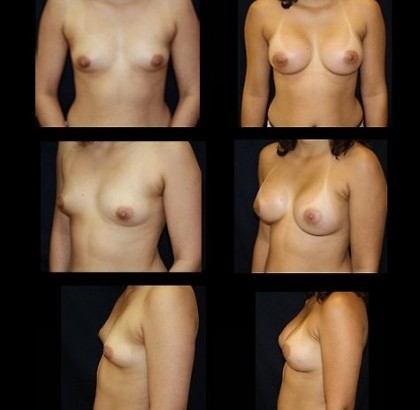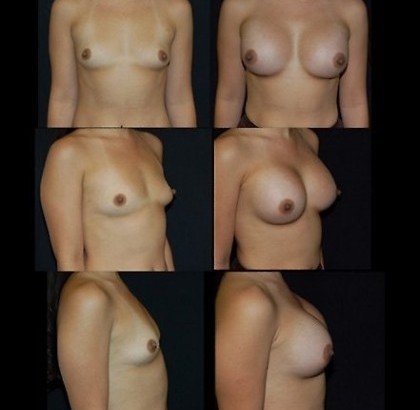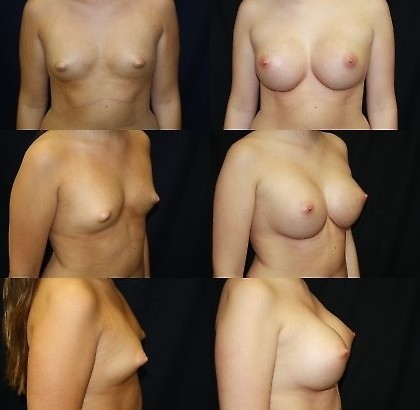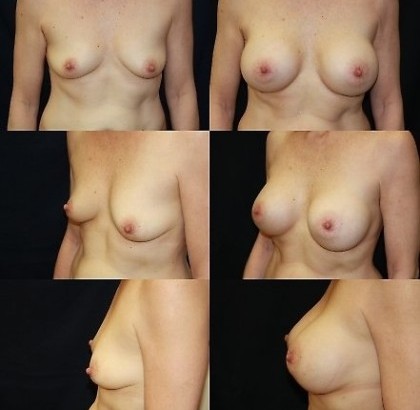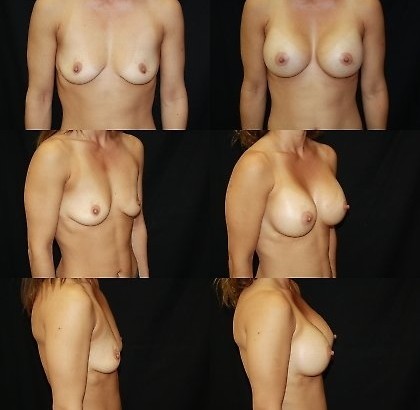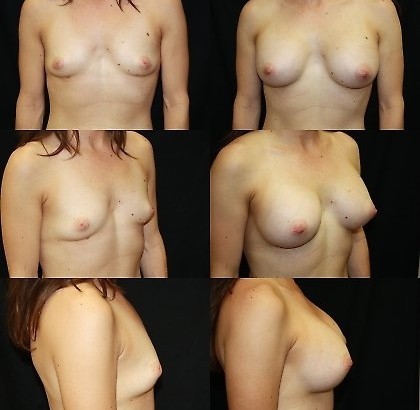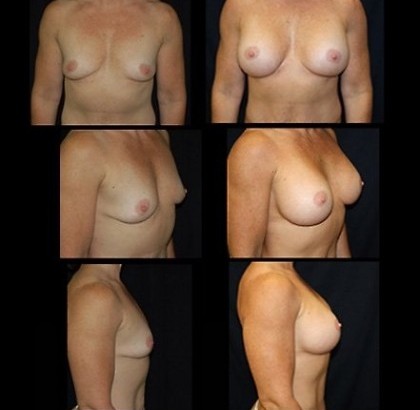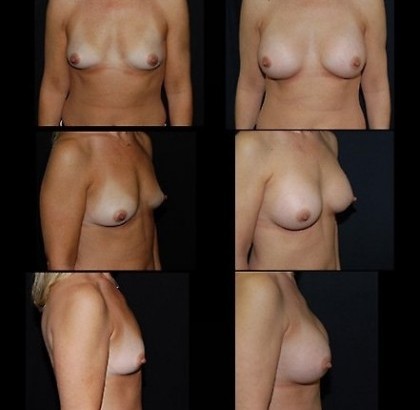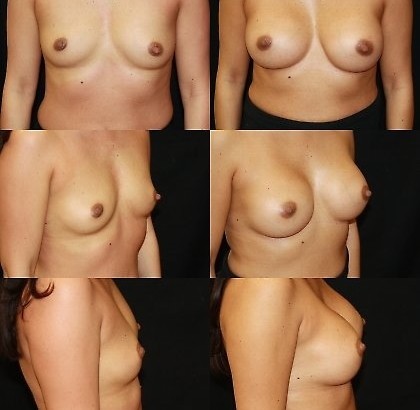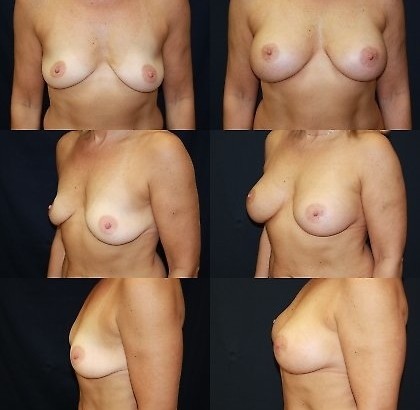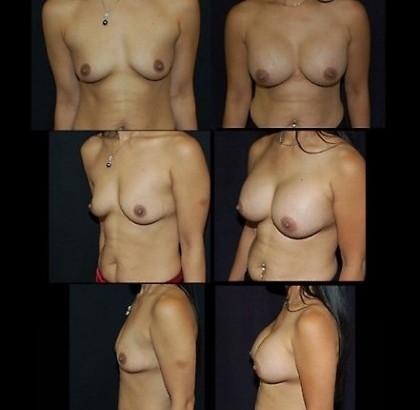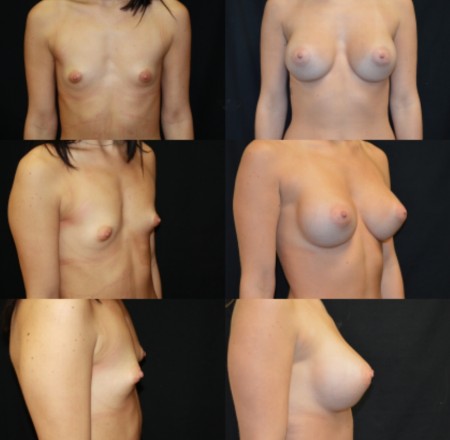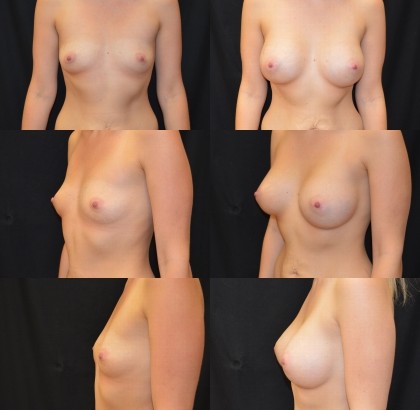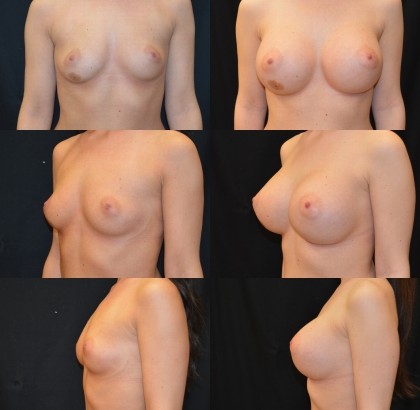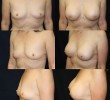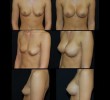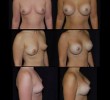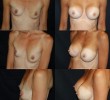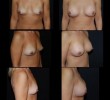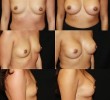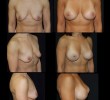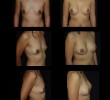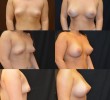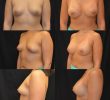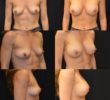Breast Augmentation
Breast size is important to many women for a variety of reasons. If you are dissatisfied with your breast size, breast augmentation surgery is a choice to consider. Often times, women notice a decrease in breast size or a change in shape after pregnancy and nursing, or after losing weight. Breast augmentation may enhance your breast size and shape while giving you the more proportional figure you always wanted. The implant used for breast augmentation may be filled with saline (dilute salt water) or silicone which is inserted through a small incision on the edge of the areola or under your breast. Breast augmentation is an outpatient procedure. You should expect between one to three weeks of recovery time. By inserting an implant behind each breast, Dr. Baroody is able to increase your bustline by one or more bra cup sizes. If you're considering breast augmentation, the following information will give you a basic understanding of the procedure.
IMPLANT TYPES
A breast implant is a silicone shell filled with either silicone gel or a sterile salt-water solution called saline. The Food & Drug Administration (FDA) has determined that new gel-filled implants are safe and may be used for primary breast augmentation.
RISKS AND POTENTIAL COMPLICATIONS OF BREAST AUGMENTATION SURGERY
All surgeries, no matter how common, carry intrinsic risks and potential complications. Whenever a foreign object is placed in the body, such as a hip replacement, knee replacement, or breast implant, scar develops. The surrounding spherical scar forms a pocket which keeps the implant in a favorable position. The scar or capsule around the implant may tighten, causing what is known as a capsular contracture. This squeezing of the soft implant causes the breast to feel firm. The condition is treated by removal of the scar tissue and/or implant replacement. As with any surgical procedure, post-op bleeding may occur causing swelling and discomfort. If the bleeding continues, a second operation may be required. A small percentage of women develop an infection around the implant. This may occur at any time, but is most often seen within a week after surgery. In some cases, the implant may need to be removed for several months until the infection clears. A new implant can then be inserted. Some women report that their nipples become oversensitive, undersensitive, or even numb. You may also notice small patches of numbness near your incisions. These symptoms usually disappear with time, but may be permanent in some patients. Occasionally, breast implants may leak. Rupture may occur as a result of injury or more commonly from everyday compression and movement of your implant. If a saline-filled implant leaks, the implant will deflate in a few hours and the saline (salt water) will be harmlessly absorbed by the body.
If a leak occurs in a gel-filled implant one of two things may occur. If the shell breaks but the scar capsule around the implant does not, you may not detect any change. If the scar also breaks or tears, especially following extreme pressure, silicone gel may move into surrounding tissue. The gel may collect in the breast and cause a new scar to form around it,. There may be a change in the shape or firmness of the breast. Both types of leaks will require a second operation and replacement of the implant. While there is no evidence that breast implants cause breast cancer, they may change the way mammography is done to detect cancer. When you request a routine mammogram, be sure to inform the technician that you have implants. Additional views will be required. While the majority of women do not experience these complications, you should discuss each of them with Dr. Baroody to make sure you understand the risks and consequences of breastaugmentation.
PLANNING YOUR SURGERY
In your initial consultation, Dr. Baroody will evaluate your general health and explain which surgical techniques are most appropriate for you, based on the condition of your breasts and skin quality. Be sure to mention all medications you are taking including any that are over-the-counter. If your breasts are sagging, Dr. Baroody may also recommend a breast lift.Dr. Baroody will explain the type of anesthesia to be used, the type of facility where the surgery will be performed, and the fees involved. Because insurance companies do not consider breast augmentation to be medically necessary, carriers do not cover the fees of this procedure.
PREPARING FOR YOUR SURGERY
Dr. Baroody will give you detailed instructions to prepare for surgery, including guidelines on eating and drinking, smoking, and avoiding certain vitamins/medications. While making preparations, be sure to arrange for someone to drive you home after your surgery and to help you out for a few days, if needed.
WHERE YOUR SURGERY WILL BE PERFORMED
Dr. Baroody performs the operation at Orthopaedic and Specialty Surgery Center and New Milford Hospital.
TYPE OF ANESTHESIA
Breast augmentation is performed under general anesthesia. You will be asleep through the entire operation.
THE SURGERY
The method of inserting and positioning your implant will depend on your anatomy and Dr. Baroody's recommendation. The incision can be made either in the crease where the breast meets the chest or around the areola (the dark skin surrounding the nipple). Every effort will be made to assure that the incision is placed so resulting scars will be as inconspicuous as possible. Working through the incision, Dr. Baroody will lift your breast tissue and skin to create a pocket, either directly behind the breast tissue or underneath your chest wall muscle (the pectoralis muscle). The implants are then centered beneath your breast mound. Placing the implants behind your chest muscle may reduce the potential for capsular contracture which is abnormal scar formation around the implant. This position allows for easier breast examinations and mammograms compared to placement directly behind the breast tissue. During your consultation, Dr. Baroody will discuss all the pros and cons of the various options and you both will decide the best option for you. The surgery usually takes one to two hours to complete. The stitches used to close the incisions will dissolve. A gauze bandage may be applied over your breasts to help with healing.
AFTER YOUR BREAST AUGMENTATION SURGERY
You will likely feel tired and sore for a few days following your surgery, but you will be up and around in 24 to 48 hours. Most of your discomfort can be controlled by medication prescribed by Dr. Baroody. The following day, the gauze dressings, if you have them, will be removed, and you may be given a surgical bra. You may also experience a burning sensation in your nipples for about two weeks, but this will likely subside within a month after surgery. The swelling in your breasts may take three to five weeks to resolve.
GETTING BACK TO NORMAL
You should be able to return to work within a few days, depending on the level of activity required for your job. Follow Dr. Baroody's advice on when to begin exercises and normal activities. Your breasts will probably be sensitive to direct stimulation for two to three weeks, so avoid physical contact. After that, breast contact is fine once your breasts are no longer sore, usually three to four weeks after surgery. Your scars will be firm and pink for at least six weeks. After several months, your scars will begin to fade, although they will never disappear completely. Routine mammograms should be continued after breast augmentation for women who are in theappropriate age group.
YOUR NEW LOOK
For many women, the result of breast augmentation can be satisfying, even exhilarating, as they learn to appreciate their fuller appearance. Your decision to have breast augmentation is a highly personal one that not everyone will understand. The important thing is how you feel about it. If you've met your goals, then your surgery is a success.
Common Questions
Why did my breasts get smaller and droop after pregnancy?
The breast tissue enlarges with pregnancy which stretches the overlying skin. After pregnancy, the breast tissue regresses producing less volume and excess skin. Loss of volume with a small amount of sagging may be corrected with breast augmentation surgery alone. For an excessive degree of sagging, a mastopexy or 'breast lift' may be the solution with or without an implant. I typically perform an incision around the areola with a small vertical extension to correct drooping of the breast (or breast ptosis). With this correction, the size of the areola may be reduced if needed.
How much can my breasts be enlarged? Why is it limited? How big should I go?
The degree of enlargement is based on your anatomy. Saline-filled implants require placement underneath the muscle layer of the chest to achieve a natural result. The width of your chest limit the maximum volume of an implant that may be used. I can help you determine the best size of implant for you at the time of your consultation. The size of breast augmentation is also determined by evaluating your entire body frame. The goal is to achieve a proportionate enlargement.
Will I be able to breast feed after breast augmentation surgery?
Breast augmentation may affect your ability to breast feed. Less than 20% of women reported in a recent study were unable to make enough milk to effectively breast feed. Although the chances are in your favor, this should be taken into consideration.
What happens if an implant ruptures?
Implants are not permanent devices. Mechanical failures do occur. If your implant is filled with saline you will notice an immediate deflation and the implant will need to be replaced. With silicone filled implants, the rupture is less obvious and an MRI will be required to verify a rupture. The companies which manufacture the implants have specific warranties that you may discuss with Dr. Baroody.
Do I have to have my implants changed after a certain number of years?
No. You do not need to change your implants unless there is a problem. If you have silicone implants the FDA recommends that you have the implants exchanged at 10 years, however, that is not mandatory. We will evaluate the implants at that time and make a decision together.
